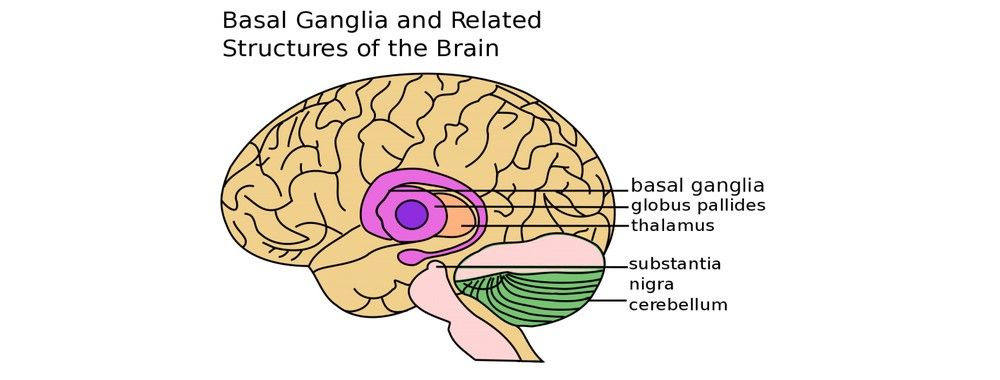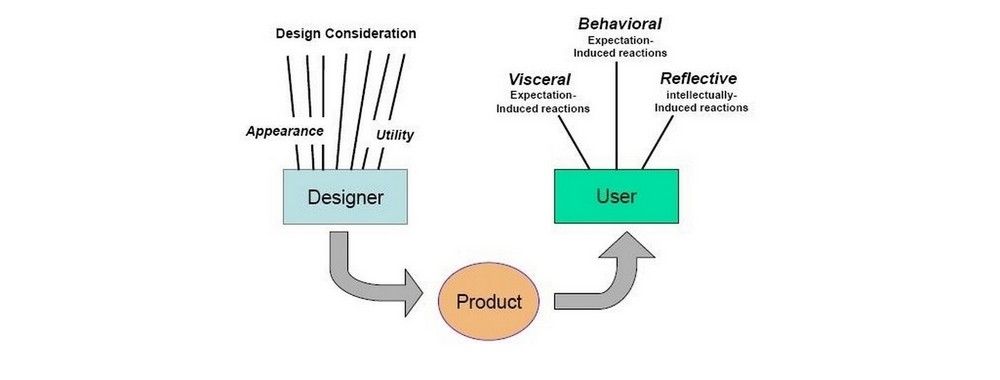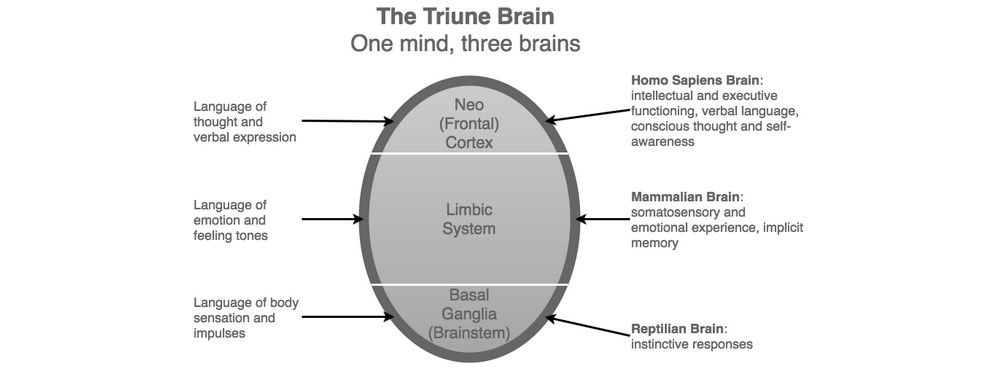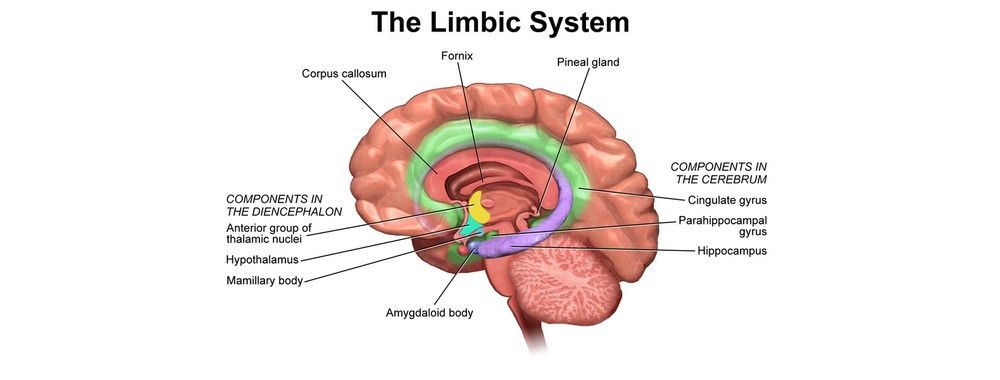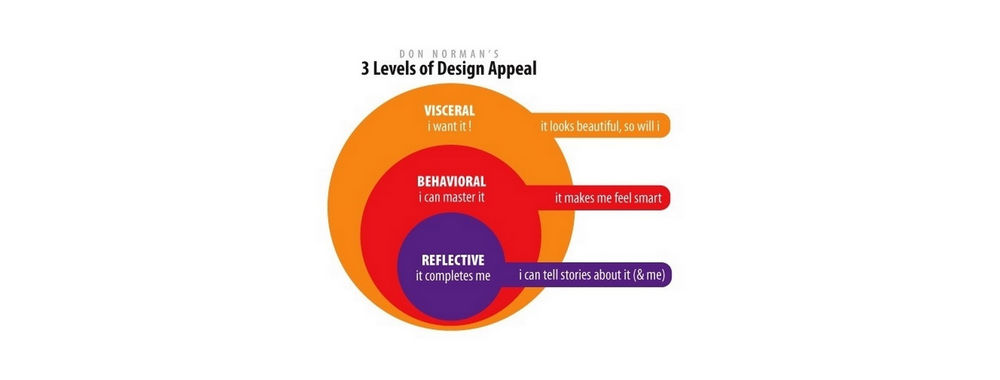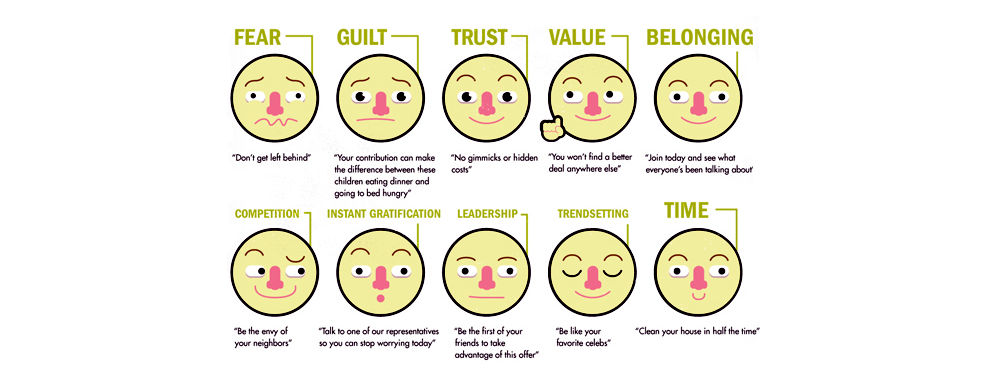“...we now have evidence that aesthetically pleasing objects enable you to work better...products and systems that make you feel good are easier to deal with and produce more harmonious results. When you wash and polish your car, doesn't it drive better? When you bathe and dress up in clean, fancy clothes, don't you feel better? And when you use a wonderful, well-balanced, aesthetically pleasing garden or woodworking tool, tennis racket or pair of skis, don't you perform better?”
—Don Norman (2005) in “Emotional Design: Why we love (or hate) everyday things"
Emotional responses are the product of two major information-processing systems, which are the affective and cognitive systems. Sensory information from our environment, which includes sound, feel, and visual information, must be parsed by the brain into a single or set of representations that enable us to interact with our surroundings in the most personally beneficial way. For example, when you enter a website with a number of link choices in the navigation menu, you must process the visual information (text or images) to help you decide which links may lead to the pages that contain the information you need. This is an example of cognitive processing, where we analyze the available sensory information, as a means of making sense of the world and making appropriate choices according to our situation. In contrast, the affective system operates consciously and subconsciously. The affective system is often referred to as the judgmental system, as information is processed to help us discern between useful and useless things, good from bad, fun from boring, dangerous from non-threatening, and all other value judgements.
The influence of the affective and cognitive systems
While the cognitive system influences our emotional experience, the affective system can be thought of as the impetuous or immediate component of human emotion. For example, when we notice someone has blocked our driveway and we are unable to get our car out, the cognitive system has processed the information to help us determine the situation, while the affective system informs us that we have been 'wronged' – through physiological arousal – and we have an emotional response, such as anger or frustration. The cognitive system can help us resolve the situation, but the affective system simply enables us to determine the status (i.e. good vs. bad) of the situation by affecting our psychophysiological state. The affective system can, however, impact on the cognitive system, impeding our progress on a task or clouding our thinking when we are trying to make sense of a situation.
However, affect is integral to our decision-making ability. Imagine if dangerous situations failed to arouse fear. We would lack the necessary physiological impetus to leave. And if we did not experience some internal change when we see something that would be beneficial to us, what would we base our decisions upon? Quite simply, the affective system allows us to make the right decisions for us.
Research in the human decision-making process
Psychologists have sought to understand the processes that underlie human decision-making. In an effort to derive such an understanding and identify the brain centers in charge of decision-making, the focus has often centered on patients suffering from some form of brain disorder. In 'The Man Who Mistook His Wife for a Hat', author and psychiatrist Oliver Sacks documents a number of cases where patients have experienced decision-making difficulties as a result of brain injury.
One such case, from neuroscientist Antonio Damasio, tells the story of a patient incapable of making even the smallest of decisions (e.g., what to eat, what to wear, etc.) following an acquired brain injury. To the casual observer, the patient was perfectly 'normal', with all aspects of normal functioning preserved. However, the injury had resulted in damage to the limbic system: the brain center in charge of the emotional response process. As a result, the individual was incapable of experiencing any physiological change in response to environmental stimulation. While that person was still able to identify the emotion(s) felt previously, in response to specific stimulation, the feeling was no longer present.
Therefore, while the popular belief is that decision-making is a rational process, dominated by reasoning and analysis of the cold, hard facts available to us, it would appear the affective system and our emotions help us discern, distinguish, and decide.
The Affective System and Design
As the affective system informs us when things are good and when they are bad, we must take into consideration how this response influences a user's/consumer's thought processes. From your own experiences, you are probably only too aware of the fact that performance often suffers when we feel uncomfortable, fearful, depressed, or another negative emotion. So, we can also say, conversely, positive emotions help us perform better. Therefore, any characteristic of a product which stimulates some positive response has the potential to improve performance or, at the very least, the user experience. As Don Norman states, "Attractive things work better".
An example of affect and design
Shoes; there is so much to choose from. The styles, materials, colors are a number of things to consider. For something whose primary function is to comfortably protect our feet from the ground and weather, we spend a lot of time thinking about the superficial qualities. If we based our purchasing decisions purely on the product's usable qualities, there would be millions of products on the scrapheap. Distinguishing one pair of shoes from another without the involvement of the affective system would be difficult. All shoes, by definition, afford walking in, so our judgmental system allows us to focus on a smaller set of options by separating out the 'good' from the 'bad'. All of these decisions are enabled by our instant emotional responses, which are the product of the affective system. It’s not just shoe designers that aim to address all our judgments – think also about how this knowledge affects the design of a shoe-selling website. It’s not accidental that the best websites allow us to apply a range of criteria when searching for shoes, instead of, for example, just allowing us to specify a price that we can afford. Christian Holst, co-founder of the Baymard Institute for improving online experiences, reports that in 2015 only 16% of major e-commerce websites in the US were providing a good filtering experience that accommodated the judgmental system of their customers.
The more considered, analytical elements to our decision-making, such as deciding whether we can afford the chair we are interested in, are under the control of our cognitive system. However, such is the power of our judgmental side, if the pull of the affective system is strong enough, people might buy things they cannot really afford.
Conclusion
The affective system is similar to our inner child, screaming to us when he/she wants something and making just as much fuss when things are not right. The inner child has basic needs; things must look nice, feel nice, and make him/her happy. When the inner child is comfortable, then they are quiet and allow the inner adult (i.e. the cognitive system) to devote their attention to the cold, hard facts and make well-reasoned decisions. Therefore, to enable rapid, accurate decisions, you must ensure the things that influence our affective system are considered and cared for; otherwise, the inner child threatens to scupper the whole process.
The Take Away
Emotions are the product of changes to the affective system following stimulation from sensory information. When the affective system has been aroused, psychophysiological changes occur, and it is these changes that create the emotional sensation. The affective system operates both consciously and subconsciously. However, this system influences us immediately and for this reason is often referred to as the judgmental system. The affective system influences the cognitive system, which is the more rational, considered system involved in the emotional response. When the affective system is impacted in some negative way, it can potentially impede the cognitive system. For this reason, we must ensure the negative aspects of viewing, using, and experiencing our products are taken care of so as to limit their impact on our decision-making and overall user experience.
References & Where to Learn More
Damasio, A. (1994). Descartes' Error: Emotion, Reason, and the Human Brain, Putnam Publishing.
Holts, C. (2015). The Current State Of E-Commerce Filtering
Sacks, O. (1985). The Man Who Mistook His Wife for a Hat and Other Clinical Tales, Summit Books.
Hero Image: Copyright holder: Caporaso Design on www.sohomod.com, copyright terms and license: Fair Use


